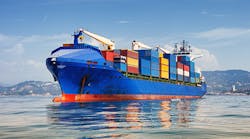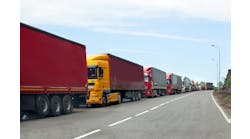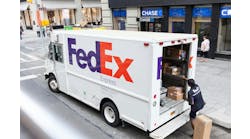While economies benefit from international trade – estimated by the WTO at $19 trillion in 2018 or 23% of global GDP -- they come at a lost. Transporting goods around the globe generates 8% of global CO2 emissions according to the International Transport Forum.
In response to the global climate crisis and to align with the Paris Agreement, more than 600 multinationals are setting corporate-wide emission reduction targets through the Science Based Targets initiative. When it comes down to freight transport, however, most depend on collaboration with subcontracted logistics service providers and carriers to reach targets.
To help reduce the emission, recently, Smart Freight Centre and the World Business Council for Sustainable Development (WBCSD) released the Smart Freight Procurement (SFP) Guidelines, and BSR released the Sustainable Freight Procurement (SFP) Framework. These tools will enable organizations to reduce greenhouse gas emissions and air pollutants through their freight transport and logistics procurement.
“The beauty of our guidelines is that they allow companies and other organizations to leverage climate action through their supplier contracts“ said Sophie Punte, executive director of Smart Freight Centre, the global non-profit organization that co-authored the SFP Guidelines together with WBCSD and with input from industry through the Global Logistics Emissions Council (GLEC).
The SFP Guidelines contain practical actions, building on company experiences and best practice to highlight how these can contribute to GHG emission reductions. Companies and other organizations can use the guidelines to identify gaps and fully integrate climate and air pollution action into their procurement processes.
The SFP Guidelines complement the already existing GLEC Framework for logistics emissions calculation and reporting, as part of Smart Freight Centre’s broader effort to help companies on their journey to zero-emissions freight. The SFP Guidelines are part of WBCSD’s Transforming Heavy Transport project in partnership with Smart Freight Centre and the We Mean Business coalition.
“WBCSD and our member companies are working to find solutions to accelerate the decarbonization of all sectors to net-zero climate impact. The Guidelines are a practical tool for companies to integrate low-carbon transport decision criteria into existing procurement processes and send a market signal to the freight and logistics sector“ said María Mendiluce, WBCSD’s Managing Director.
The SFP Guidelines also complement the SFP Framework, developed by BSR and members of Clean Cargo and the Sustainable Air Freight Alliance, to help companies evaluate, benchmark, and improve their freight procurement practices.
“Building from BSR’s Supply Chain Leadership Ladder, we tailored this industry-vetted Framework to the freight category for corporate sustainability and/or logistics departments to make a quick assessment of their relative maturity in sustainable freight procurement and identify areas for enhancement,” said Angie Farrag-Thibault, Director of Collaboration, Transport & Logistics at BSR.



